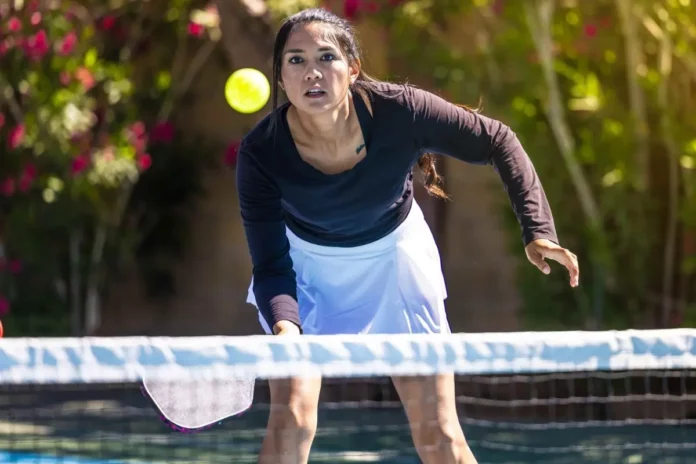Winning in Pickleball Starts with a Deep Return: In pickleball, each point opens with two fundamental shots: the serve and the return. While both are essential, the return shot—often overlooked—plays a pivotal role, especially in terms of depth. A deep return not only limits an opponent’s options but also enhances control and sets up opportunities for the returning team, whether in singles or doubles.
The Role of Depth in Singles
In singles play, depth on both the serve and the return is critical. Without a partner to share court coverage, singles players must protect a larger area, making a deep return essential. A short return, however, gives opponents a clear advantage, opening up various angles for cross-court and down-the-line shots as well as options for drops and hybrid drives.
Ideally, singles players follow their return to the net to pressure their opponent and increase their chances of winning the point. Yet, in cases where a return lands shallow, staying back may be the better choice to avoid being outmaneuvered at the net. Notably, professionals like Rafa Hewett have found intermittent success staying back, especially in women’s singles, where players often wait for an ideal shot before advancing. However, this approach carries risks: opponents who control the net can apply pressure and capitalize on scoring opportunities over time.
Doubles: Less Critical but Still Impactful
In doubles, while depth on the return is slightly less crucial than in singles due to the presence of a partner, a weak return can still shift momentum and potentially determine the outcome. Aggressive doubles teams, often called “bash and crash” teams, thrive off shallow returns. If opponents prefer to drive the third shot, a short return gives them the opening they need to seize control of the net.
The problem intensifies if a team is stacking and needs to switch sides after the return, making it harder to defend against a fast fourth shot. Weak returns in these situations can set up opponents for multi-point runs, making it challenging for the returning team to regain control.
Pinning Opponents at the Baseline
An effective return strategy in pickleball, particularly in doubles, involves keeping opponents pinned to the baseline. This forces the receiving team into a less advantageous position, increasing the chances of them making errors. A deep return in pickleball pressures opponents to hit a precise third shot, ideally one that won’t allow them to advance easily to the net.
Moreover, a deep return allows doubles partners enough time to get into their ideal positions and prepare for the fourth shot. By consistently returning deep, players can control the pace of play, limit opponents’ scoring opportunities, and often turn the tide in their favor.
News in Brief : Winning in Pickleball Starts with a Deep Return
The depth of a return in pickleball is a game-changer, influencing control and strategy. In singles, a deep return restricts opponents’ options and improves court coverage, while in doubles, it stymies scoring runs by aggressive opponents. Players who consistently return deep gain a positional advantage, applying pressure and keeping opponents off-balance.
ALSO READ : The Surprising Strategy for Dominating the Kitchen Line and Crushing the Opponents

